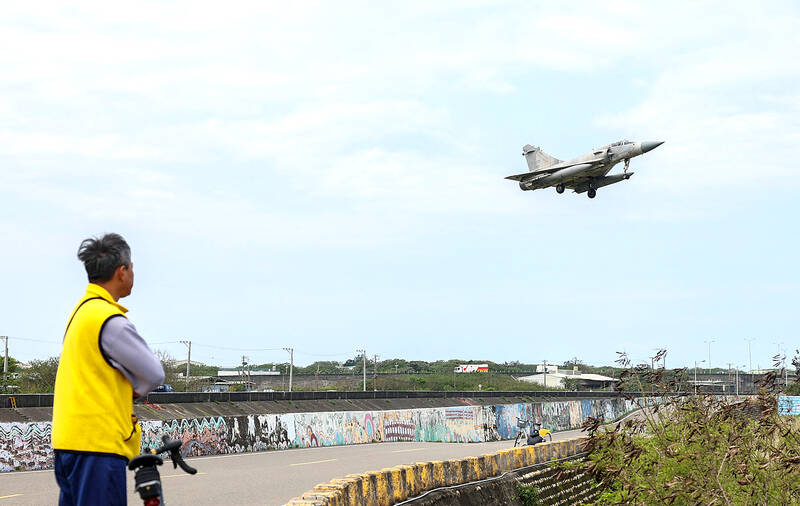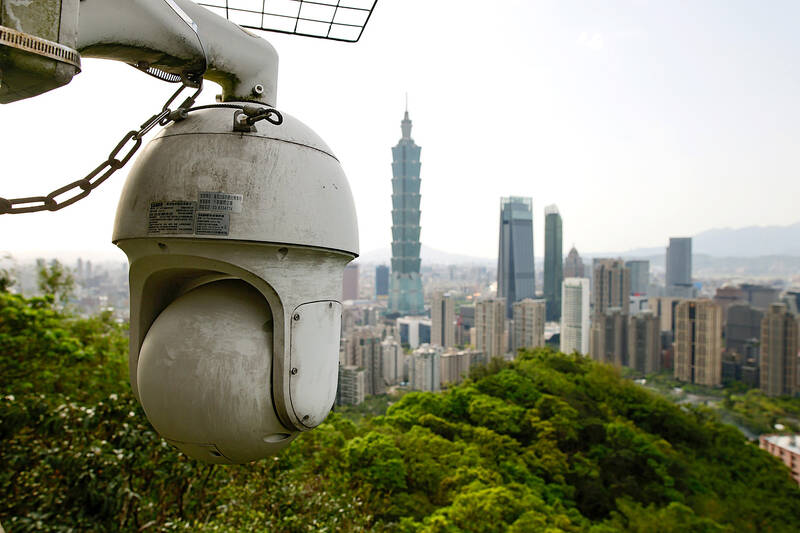The People’s Republic of China (PRC) last week offered us a glimpse of the violence it plans against Taiwan, with two days of blockade drills conducted around the nation and live-fire exercises not far away in the East China Sea. The PRC said it had practiced hitting “simulated targets of key ports and energy facilities.”
Taiwan confirmed on Thursday that PRC Coast Guard ships were directed by the its Eastern Theater Command, meaning that they are assumed to be military assets in a confrontation. Because of this, the number of assets available to the PRC navy is far, far bigger than shown by many of the neat charts being passed around. Recall also that the PRC has a seaborne militia, the People’s Armed Forces Maritime Militia (PAFMM), primarily composed of small craft. Anyone who imagines these will be easily taken care of should bone up on the history of US PT boats, German E-boats and, especially, the Italian MAS.
The exercises were accompanied by propaganda cartoons that emphasized the PRC’s knowledge of Taiwan politics by echoing the talking points of its political ally, the Chinese Nationalist Party (KMT). The cartoons depicted President William Lai (賴清德) and the Democratic Progressive Party (DPP) as corrupt, abusing power in prosecuting Beijing’s preferred presidential candidate in last year’s election, former Taiwan People’s Party chairman Ko Wen-je (柯文哲), hollowing out Taiwan via Taiwan Semiconductor Manufacturing Co’s (TSMC, 台積電) investments in the US and rejecting the Republic of China (ROC). These are all KMT talking points, intended to increase skepticism of the US and distrust of the DPP.

Photo: Reuters
Actions speak louder than words, and the PRC undermined its anti-DPP position with its violent threats. History shows that the public tends to move toward the DPP when the PRC gets too close. The PRC also presented excellent reasons for Taiwan to increase its military spending, right out in front where the public could see them, again in the midst of a major recall by civil society organizations targeting KMT politicians. That recall is driven in part by the pro-China parties’ attacks on defense spending.
GRID UPGRADES NEEDED
While there was much focus on the PRC’s very obvious and comical propaganda campaign, the key words there are “ports,” “energy sites” and “blockade.” As I have observed before, PRC navy doctrine calls for the blockade to be accompanied by bombardment. Last week’s exercise illustrated that rather dramatically. In a blockade, the electrical grid and its power plants are going to be hit, including its nuclear plants. That is what Russia is doing to Ukraine at the moment, except that the PRC attacks are likely to be much greater in volume and competence.

Photo: AFP
Commentators who demand that Taiwan spend more on defense typically imply this to mean acquisition of weapons, military training and the like. That is only half the battle. The real theater of combat, as Ukraine shows, is going to be the electrical system. Taiwan needs to urgently increase spending on defense via investments in electrical grid upgrades aimed at national security, anti-drone measures around power stations and substations and distributed off-grid electrical production. These are absolutes if Taiwan is to weather a blockade. Missile stockpiles are pointless without an electrical grid.
Ukraine has learned this.
“Protecting the grid’s key substations is now the single most important priority for the survival of the Ukrainian state,” Theresa Sabonis-Helf wrote in a piece at War on the Rocks.

Photo: EPA-EFE
One of the key pillars of Ukraine’s power strategy is having secure off-grid power sources for its nuclear power plants. Ironically, in war, the nuclear plants in Taiwan so many claim are vital in a blockade will become liabilities, generating headaches for grid managers rather than electricity.
REJECT RENEWABLES AT YOUR PERIL
But shooting down incoming missiles and drones is only half the problem. Another fork of Ukraine’s grid defense is its ability to rapidly repair damaged electrical sites. It also complements its nuclear power plants with a distributed energy production system, according to Sabonis-Helf.
“Such a system would integrate renewables, batteries and modular gas turbines, which could significantly improve the resilience of the grid,” she writes.
Ukraine has imported 1.5 million power generators and 200 megawatts of power storage, according to her data. Seen in that light, Taipower’s opposition to renewables and other modern energy systems is a disaster for both the environment and national security.
Like Taiwan, Ukraine has five large cities of over 900,000 people each, Sabonis-Helf notes, adding: “Large urban areas such as these rapidly become ungovernable without electricity.”
In summer, the tens of thousands of apartment units that developers have saddled the island with are going to turn into ovens without electricity. Unlike Ukrainians, Taiwanese whose cities have died have no place to run to.
Fortunately, the legal and grid framework for a distributed power system already exists. Taipower’s own figures show that at the end of 2023, it had contracts with “9 independent power producers (IPPs), 48 co-generation power providers and … 55,385 contracts for solar, wind, hydropower and other forms of renewable energy.”
It said 71KWh of electricity was purchased from external sources in 2023, a tiny fraction of the roughly 20-26 million KWh of electric power consumed each month, peaking each August. Obviously, there is room for expansion.
SOLUTIONS
The government needs to move on this urgently. First, it has to start pointing to the electricity dimension of Russia’s invasion of Ukraine to mobilize public opinion. It can use that same approach with foreign commentators demanding that Taiwan spend more to justify enhanced grid spending to both them and to the local public.
Then it needs to put in place programs to train a reserve of maintenance and repair personnel, to massively expand off-grid and private power production (a simple, good start would be to reverse the July 2020 decision of the Council on Agriculture to ban small farm solar production), and cram Taiwan with renewable energy systems with abundant overcapacity.
Finally it needs to make defense preparations for the grid highly visible to the public. Some shouting and screaming about power conservation would also be useful for both the environment and national security.
Pro-Taiwan outsiders commenting on Taiwan need to consistently raise grid issues in their discussions of Taiwan’s defense. As history shows, external publicity can be effective in creating change.
Finally, the threat to the power grid highlights the rhetorical and strategic purposes of the KMT-driven “debate” over nuclear power. The KMT keeps “nuclear power” in the public eye because, by doing so, it channels the debate into a pointless struggle over whether to turn the island’s aged, irrelevant nuke plants back on, diverting funds and attention from where they are urgently needed: power grid defense, decentralization, multi and off-grid sourcing and hardening. Worse, if the KMT were to “win” that debate, the island’s grid would become more centralized, making it more vulnerable not only to attack, but to the mere threat of attack.
Simple: as long as we are talking about nuclear power, the KMT is winning.
Notes from Central Taiwan is a column written by long-term resident Michael Turton, who provides incisive commentary informed by three decades of living in and writing about his adoptive country. The views expressed here are his own.

A vaccine to fight dementia? It turns out there may already be one — shots that prevent painful shingles also appear to protect aging brains. A new study found shingles vaccination cut older adults’ risk of developing dementia over the next seven years by 20 percent. The research, published Wednesday in the journal Nature, is part of growing understanding about how many factors influence brain health as we age — and what we can do about it. “It’s a very robust finding,” said lead researcher Pascal Geldsetzer of Stanford University. And “women seem to benefit more,” important as they’re at higher risk of

Eric Finkelstein is a world record junkie. The American’s Guinness World Records include the largest flag mosaic made from table tennis balls, the longest table tennis serve and eating at the most Michelin-starred restaurants in 24 hours in New York. Many would probably share the opinion of Finkelstein’s sister when talking about his records: “You’re a lunatic.” But that’s not stopping him from his next big feat, and this time he is teaming up with his wife, Taiwanese native Jackie Cheng (鄭佳祺): visit and purchase a

April 7 to April 13 After spending over two years with the Republic of China (ROC) Army, A-Mei (阿美) boarded a ship in April 1947 bound for Taiwan. But instead of walking on board with his comrades, his roughly 5-tonne body was lifted using a cargo net. He wasn’t the only elephant; A-Lan (阿蘭) and A-Pei (阿沛) were also on board. The trio had been through hell since they’d been captured by the Japanese Army in Myanmar to transport supplies during World War II. The pachyderms were seized by the ROC New 1st Army’s 30th Division in January 1945, serving

Mother Nature gives and Mother Nature takes away. When it comes to scenic beauty, Hualien was dealt a winning hand. But one year ago today, a 7.2-magnitude earthquake wrecked the county’s number-one tourist attraction, Taroko Gorge in Taroko National Park. Then, in the second half of last year, two typhoons inflicted further damage and disruption. Not surprisingly, for Hualien’s tourist-focused businesses, the twelve months since the earthquake have been more than dismal. Among those who experienced a precipitous drop in customer count are Sofia Chiu (邱心怡) and Monica Lin (林宸伶), co-founders of Karenko Kitchen, which they describe as a space where they